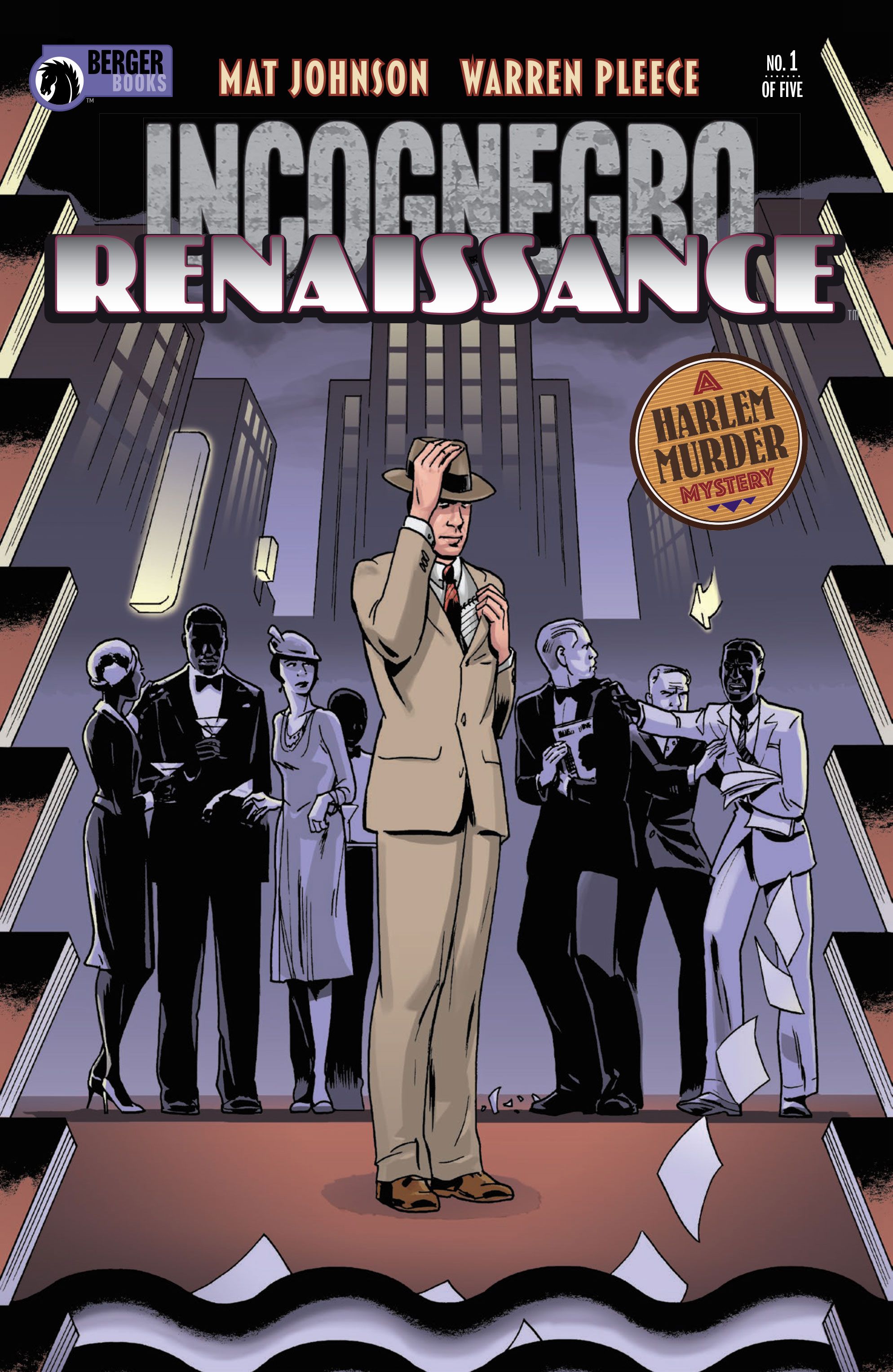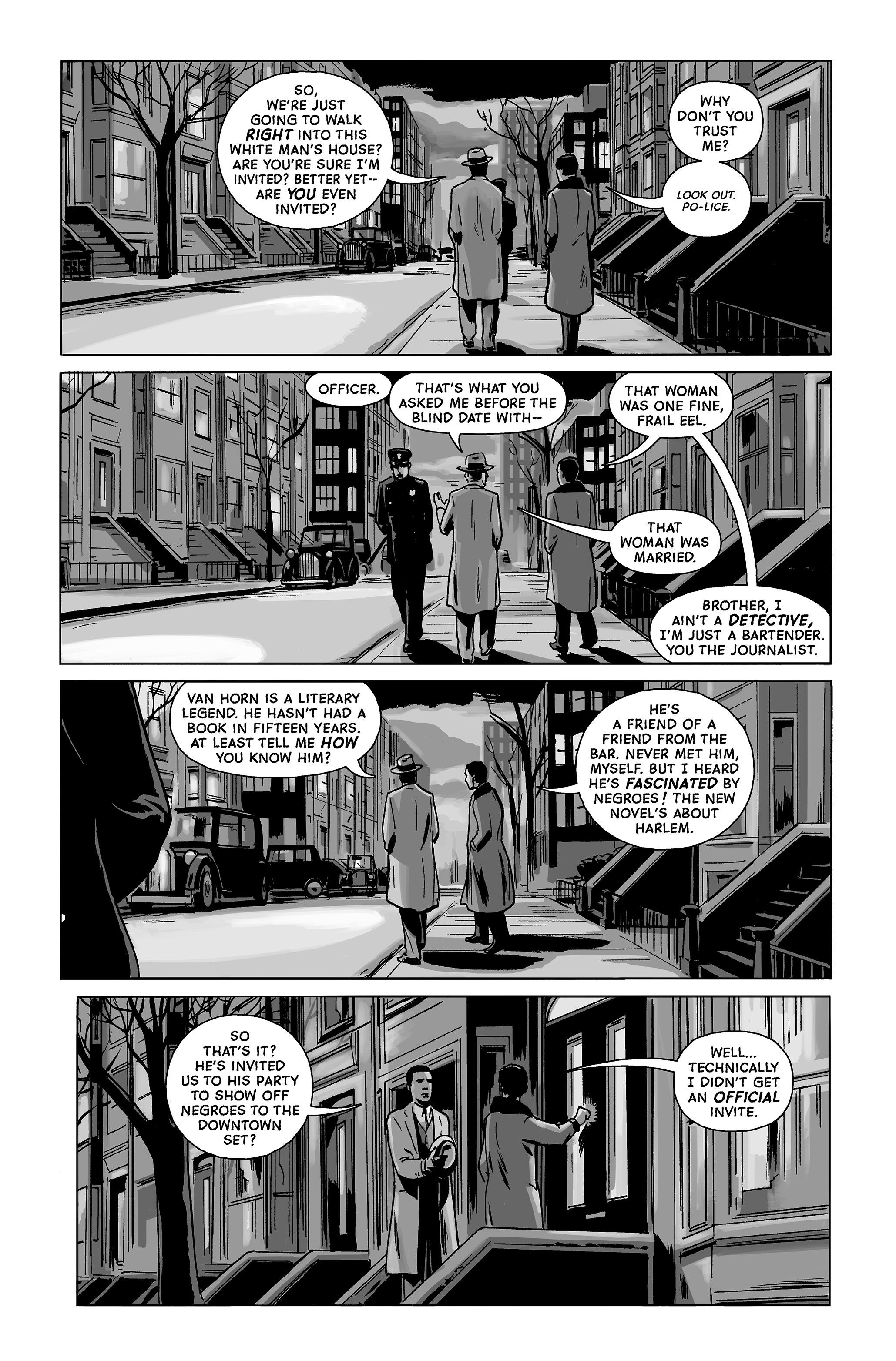Zane Pinchback is a light-skinned Black man who changes his identity when he travels to the Jim Crow south, posing as a white man to investigate lynchings and the Klan in the 1930s. He's the hero of the graphic novel Incognegro, by Mat Johnson and Warren Pleece, which was first published by DC Comics' Vertigo imprint in 2008.
Now Incognegro is back as one of the initial offerings from Berger Books, former Vertigo executive editor Karen Berger's new imprint at Dark Horse Comics. The original graphic novel has a new cover and the art -- formerly stark black and white -- is now toned, but the story is the same: A sophisticated murder mystery about people who take on new identities for purposes of their own. The book will be out in February.
RELATED: Karen Berger Aims for ’Something Different’ with Berger Books Lineup
But that's not all: Zane Pinchback is back in a new comic book series, Incognegro: Renaissance, that takes place 20 years before the events of Incognegro and serves as something of an origin story for the crusading reporter.
CBR asked Johnson and Pleece about the roots of Incognegro, what has changed, and what they have planned for the new series -- and beyond.
CBR: What struck you as compelling about the story that became the original Incognegro?
Mat Johnson: Part of the attraction of doing a historical piece on lynching and racial identity is that I hadn’t seen anything like that done in graphic storytelling before. The same idea wouldn’t be of particular note as a novel, but it was a unique way of using the comic form at the time.
How closely did you model Zane Pinchback on the historical figure Walter White?
Johnson: In many ways, Zane has more to do with my own life than White’s. At the time of the publication of the book, my wife and I had a set of twins that came out in two different shades of human: pink and brown. It struck me how, today, one looking more white and the other more black, won’t have nearly as much effect on their lives as it would have if they’d been born a hundred years ago. Walter White’s life was more the inspiration to tell an entirely different story.
Were there any little moments in the story that were drawn from your own experiences?
Johnson: Well, I grew up an African-American who looked to many people like a white American. That was a pretty damn good story prompt right there.
How did the two of you meet, and how did you work together on the book?
Johnson: We got to meet in person at New York Comic Con the year after the book came out. It was like biological parents being introduced for the first time.
Warren Pleece: We were brought together by Jonathan Vankin at Vertigo, who edited the original version. I’d drawn quite a few titles for Vertigo by then, but when I was asked to work on Incognegro, I jumped at the chance. I love noir and edgy fiction, and Incognegro was all that and more. What a writer! A dream job!
At the time Incognegro was first published, graphic novels didn’t have the sort of popularity they do now. How did it find its audience then, and do you think it will reach a different set of readers now?
Pleece: As well as a great publicity team at DC, Vertigo was doing something special at the time, commissioning original, thought-provoking titles. I think people are still crying out for intelligent comics and graphic fiction now and the themes Incognegro tackles are as relevant today as they were 10 years ago. Maybe more so.
In re-reading Incogngegro, it strikes me that it is very much about identity. Almost all the main characters are, at one time or another, not what they seem to be. Sometimes you make this obvious to the reader from the get-go and other times it’s not revealed till later in the story. What interests you about this theme?
Johnson: I think we often think of identity as being static, immutable. I’m interested in the ways that’s false. The places where our notions of the solidity of identity become unsettled.
The new edition is toned, which gives it a very different look from the original’s stark black and white. Why did you decide this would be a good look?
Pleece: It was going to be toned by a colorist originally, but as the book progressed they decided the artwork worked as it was. I think that was the right decision at the time, but I’m glad I’ve had the chance to revisit the art this time around. It really adds a whole lot more; an extra dimension to the mood and storytelling.
Aside from that, what are the other differences between the original and the new edition?
Pleece: We have Richard Bruning’s great new design for the book, some of my original character sketches in the back and Mat’s added a timely, resonating afterword.
Warren, when you were working on the original edition, how did you resolve the problem of drawing characters with different racial identities -- some ambiguous, some clearly defined -- without being able to use skin tones?
Pleece: I’ve always enjoyed challenges as an artist, so it was just about working out the character sketches until they felt right. A visual storyteller should have worked out the hard stuff before they start laying out the pages so when the reader starts the book, they’re not even aware of its building blocks, they’re just swept up by the story.
Why were you inspired to pick up the story again, 10 years later, and do Incognegro: Renaissance?
Johnson: We had hoped at the time to do more Incognegro stories, but didn’t get the chance. This was a rare opportunity, so we jumped at it.
How are you approaching this story differently than you did the original?
Johnson: Well, hopefully, we’ve both grown as artists -- so there’s that. But also, I think the first one jumped straight into a character’s existing world. This one is an origin story.
What sort of historical research have you done for these stories, in terms of visuals, the culture of the time, and the way people spoke?
Pleece: Mat’s scripts already have loads of direction, and then I get carried away making sure I’m drawing the right kind of mass-produced cheap camera for Zane, or that I’m drawing the right version of the Cotton Club. I can get a bit carried away on old cars and street scenes.
RELATED: Warren Pleece on Life Sucks and Incognegro
You have worked with Karen Berger on both the original Incognegro and Incognegro: Renaissance. How has she been involved with these stories? Has she suggested any major changes?
Pleece: Incognegro wouldn’t have happened if it wasn’t for Karen and her time at Vertigo and she’s played an integral part in getting the book back out again where it belongs. She’s also a brilliant editor, and I think we’re all very lucky that she’s back to producing new comics!
Do you have more Zane Pinchback stories to tell?
Johnson: Well, that depends upon whether anyone wants to hear them!
Incognegro: Renaissance #1 and the new edition of Incognegro is scheduled for release on Feb. 7.





